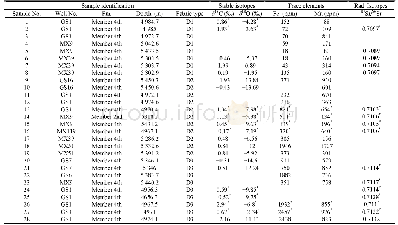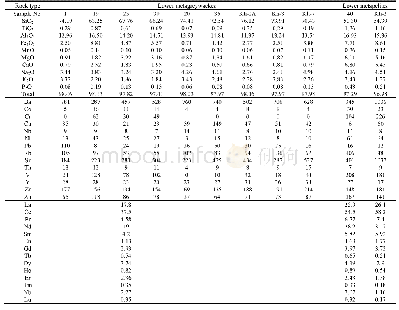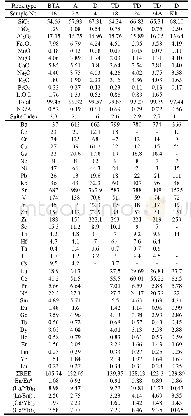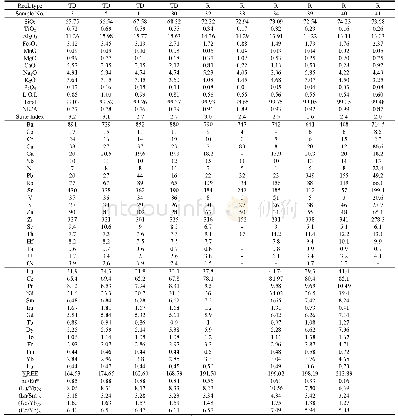《Table 2 Trace element concentrations (ppm) for silts and mud of the Chengqiang section》
 提示:宽带有限、当前游客访问压缩模式
提示:宽带有限、当前游客访问压缩模式
本系列图表出处文件名:随高清版一同展现
《"Tectonically-controlled Evolution of the Late Cenozoic Nihewan Basin, North China Craton: Constraints from Stratigraphy, Mineralogy, and Geochemistry"》
The REE and Eu of sedimentary rocks are the most reliable indicators of provenance(Bhatia,1985;Taylor and Mc Lennan,1985;Mc Lennan,1989)because their elemental distributions are strongly affected by sedimentary processes,diagenesis,and metamorphism(Bhatia and Crook,1986;Mc Lennan and Taylor,1991;Condie,1993).The significant LREE enrichment and flat HREE patterns of the clastics in the Chengqiang section(Table 3 and Fig.7d)suggest that the sources rocks were chiefly felsic,and the distinctive negative Eu anomaly is evidence for a differentiated source,similar to granite or rhyolite.The Eu anomalies in all samples(0.61–0.68,average 0.65;Table 3)are similar to the average value of0.65 for craton-derived PAAS(Fig.7d).
| 图表编号 | XD0017173700 严禁用于非法目的 |
|---|---|
| 绘制时间 | 2018.04.01 |
| 作者 | LIU Jin、CHEN Xingqiang、CHI Zhenqing、WANG Yong、MIN Longrui、LI Tingdong |
| 绘制单位 | School of Civil and Architecture Engineering, Xi'an Technological University、Institute of Geology, Chinese Academy of Geological Sciences、China Railway First Survey and Design Institute Group CO., Ltd.、Institute of Geomechanics, Chinese Academy of Geolog |
| 更多格式 | 高清、无水印(增值服务) |
查看“Table 2 Trace element concentrations (ppm) for silts and mud of the Chengqiang section”的人还看了
-

- Table 3 Content of sugar and trace elements in leaves and scapes of Allium wallichii Kunth.in the original habitats in H





